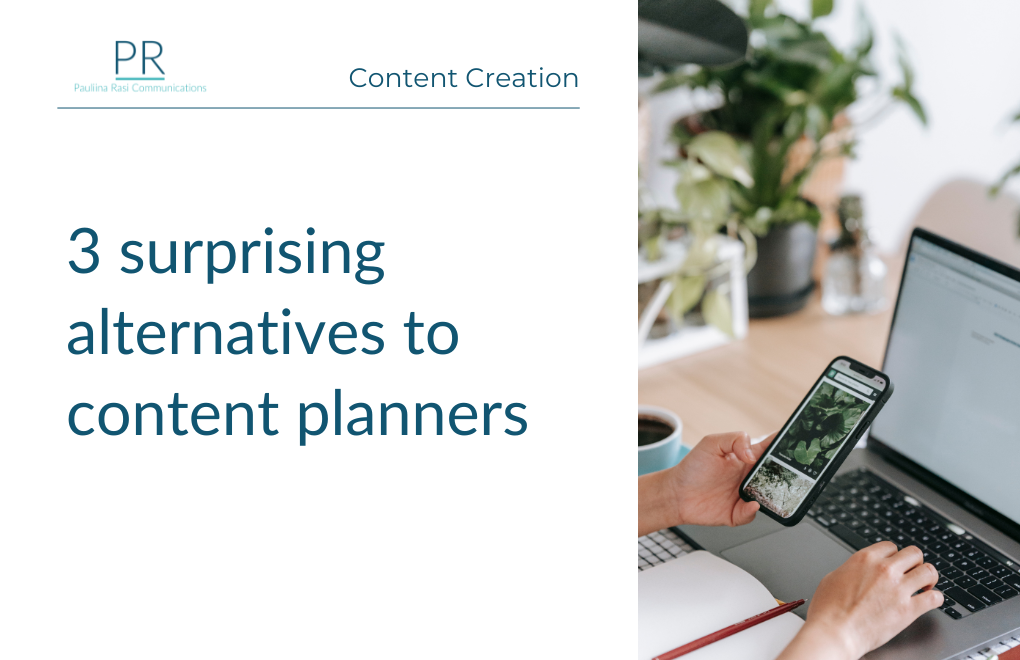What would your content look like if you tossed away your to-do list and planner? These three gentle strategies reignite my inspiration better than any planner template.
There’s a flurry of content being posted right now about preparing for a summer break, publishing content like you were never away – and catching up as soon as possible.
I should know what I’m talking about: I’ve contributed my fair share in that content vein over the years. If that’s what got you to the blog today, check out these resources:
- 12 tested & proven strategies to market your business throughout the summer season
- Leverage this summer to amplify your communication
- My top 5 tips for coming back rejuvenated from holidays
This summer, however, the topic left me deeply uninspired.
So, to bring something new to the discussion, I wanted to share with you a different strategy for summer content banking, scheduling and catch-up strategies.
Switch the question
This summer, I’ve been intentionally working a little bit less (and succeeding at it – as opposed to what happened last year).
I’ve pushed back work that isn’t deadline-sensitive and published less content than usual. Instead, I’ve been focusing on activities that help me refill my creative buckets, even at the expense of sticking to my content plans.
Two things that are good to know:
- This is not an either-/or situation. You can pre-plan your content and have your business train running on track and on schedule, and still use some of these tips to ensure you have great ideas to share in the future months, too.
- These ideas work year-round, and you don’t need to take time off specifically to use them!
Reading, reflection, regularity
One of my favourite weekly habits is the “Reading and reflection hour” that I schedule in my calendar the same way I slot in exercise, work meetings and focus time to work on priority projects.
The rules of the hour are very simple: The time will be spent on reading anything informational, inspirational and interesting that is not directly related to a work project. Taking notes is allowed, as good ideas for content, services and my work always come up, but there is no formal goal.
Taking time to read and learn new things without strict goals is a great way to keep educating myself while leaving space for spontaneous thoughts to pop up. That said, it’s just as okay not to take a single note!
Mindful content browsing
Content browsing has a bad rep as a mindless activity that always takes more time than you planned and wanted. Instead, try mindful content browsing to spark inspiration.
Approach your most important content channels as a content consumer and user and browse your feed to read interesting content. Along the process, take notes or screenshots of good posts, inspiring approaches and content formats you can use yourself in the future.
Remember that topics don’t really matter in this exercise: the goal is to get ideas you can implement and adjust, not replicate. As with the Reading & Reflection Hour habit, it’s fine to come up with zero ideas and results! It’s not likely to happen, but taking the pressure off is the point here.
Unplanned publishing periods
Being the advocate for pre-planning that I am, you don’t hear me say this often: Leave empty periods in your content plan and test publishing only spontaneous ideas and posts that come to mind.
Approaching content like this can help you bring playfulness back to your content creation, especially if you feel like running around the same circles.
Not publishing content or simply participating in discussions and curating other people’s content is fine, too!
If none of these work…
How do you like refilling your creative tanks when needed? Let’s continue the discussion in the comments section below, on LinkedIn and on Content Creators’ Corner!
And if none of these nor your usual go-to strategies work, grab my cheat sheet below with ten ideas that work on every channel. Print it, tape it up next to your desk and add your own surefire ideas for low-motivation content creation days.







Recent Comments